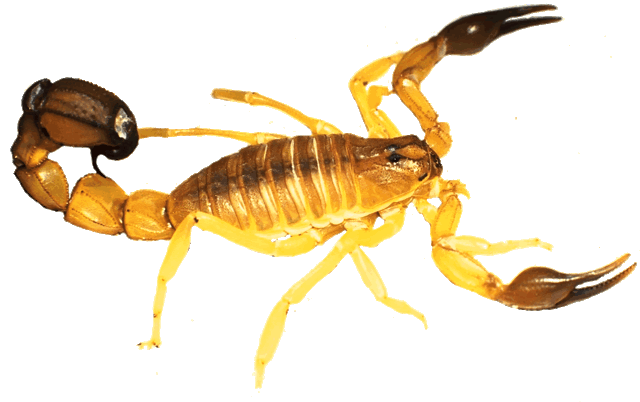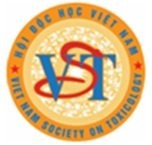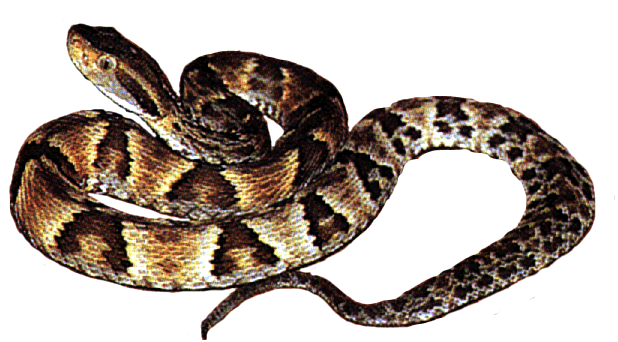1. DECISION OF VIET NAM MINISTRY OF HEALTH ALLOWING RESEARCH ON VENOMOUS SNAKES, MANUFACTURING ANTI-VENOMS & CLINICAL APPLICATIONS
Venomous snakes and snakebite victims are typical tropical diseases in developing agricultural countries like Vietnam, where every year there are up to 30,000 (Thirty thousand) envenomed victims. However, this pathology has been forgotten. As a result, snakebite victims suffered a high rate of death (19.5%), deformity, loss of function, and limb amputation (14.%). The main reason was because there were no specific anti-venoms available in clinic practice.
Since 1990, the Unit for Research and Manufacturing of Antivenoms at Cho Ray hospital (predecessor of the Vietnam Society of Toxicology -VST & Vietnam Institute of Toxicology- VIT) has researched and manufactured specific antivenoms for clinical application very effectively. On March 23, 1993, Vietnam Ministry of Health issued Decision No. 1888/K2DT allowing ” Research on the production of anti-venoms, research on clinical characteristics of snakebite patients and clinical treatment application.”. On November 14, 1998, the Minister, Ministry of Health issued decision No: 3203 ” Allowing clinical treatment applications of Naja kaouthia antivenom and Calloselasma rhodostoma antivenom “. (Fig.1).
 |
 |
| Figure.1: Decision No.: 1888 & 3203 of the Minister, Ministry of Health allowing research to produce antivenoms for clinical treatment application. | |
2. RESEARCH RESULTS IDENTIFYING VENOMOUS SNAKE SPECIES IN VIETNAM, LAOS & CAMBODIA
The Vietnam Institute of Toxicology (Trinh Xuan Kiem and his colleagues) with the help of Prof. David Warrell (Oxford University), 1989 and Thorpe RC, Wuster.W, Malhotra (Aberdeen University)-UK, 2003, determined that Vietnam has three main venomous snake families of medical importance: Elapidae family (09 species), Viperidae family (03 species), and Hydrophiidae (Sea snake) family (17 species). They are the cause of up to 30,000 snakebite victims each year in Vietnam.
Images of 03 families with 14 venomous snake species of medical importance in Vietnam, Laos & Cambodia.
Elapidae family:
1.Chinese cobra (Naja naja / Naja atra): mainly in Northern Vietnam & Laos.
2. Monocellate cobra (Naja kaouthia):in the Southwestern VN & Cambodia.
3. Spitting cobra (Naja siamensis):in the Eastern-South central regions VN & Cambodia.
4.Yellow king cobra (Ophiophagus hannah): in the Southwest VN & Cambodia.
5. Black king cobra (Ophiophagus hannah):in Central & Northern VN, Laos & Cambodia.
6. Banded krait (Bungarus fasciatus):found in all regions of the three countries: Vietnam, Laos & Cambodia.
7. Southern krait, (Malayan krait) (Bungarus candidus):only found in Southern VN & Cambodia.
8. Northern krait (Chinese or many banded krait) (Bungarus multicinctus):in Northern VN &Laos.
9. Red-headed krait (Bungarus flaviceps) and Red River Krait (Bungarus slowinskii) have been discovered in Vietnam. However, the consequences of these two snake species are not many, and their epidemiology has not been determined.
Viperidae family:
- White-lipped green pit viper (Trimeresurus albolabris): mainly red-tailed green viper, found in all regions of Vietnam, Laos & Cambodia.
- Malayan pit viper (Agkistrodon rhodostoma or Calloselasma rhodostoma): mainly in the Southeast VN & Cambodia.
- (Chinese habu, Taiwanese pit viper), (T. mucrosquamatus):found in the Northern border provinces of Vietnam.
Hydrophiidae Sea snakes:
17 species of Hydrophiidae (sea snakes), the most typical sea snakes are Enhydrina schistosa & Hydrophis cyanocinctus.
Images of snakes of medical importance in Vietnam, Laos & Cambodia:
Elapidae family:

Fig.2: Naja naja -Atra |

Fig.3: Naja kaouthia |

Fig.4 Back of Naja siamensis. |

Fig.5: Front of Naja siamensis |
|
Fig. 6:Yellow King Cobra (Ophiophagus hannah) |

Fig.7: Black King Cobra (Ophiophagus hannah) |
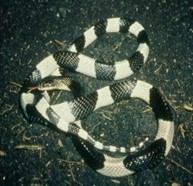 |
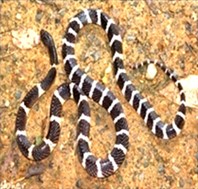 |
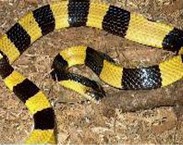 |
| Fig.8: B.candidus in the South of VN | Fig.9: B.multicinctus in the North of VN. |
Fig.10: Bungarus fasciatus |
Viperidae family:
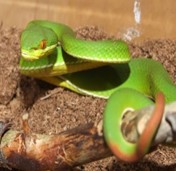 |
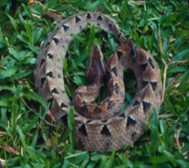 |
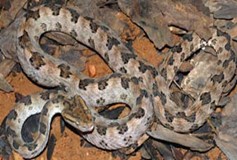 |
| Fig.11: Trimeresurus albolabris | Fig.12:Calloselasma rhodostoma | Fig.13. Trimeresurus mucrosquamatus |
Hydrophiidae (Sea snake) family:
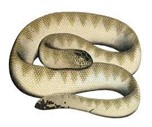 |
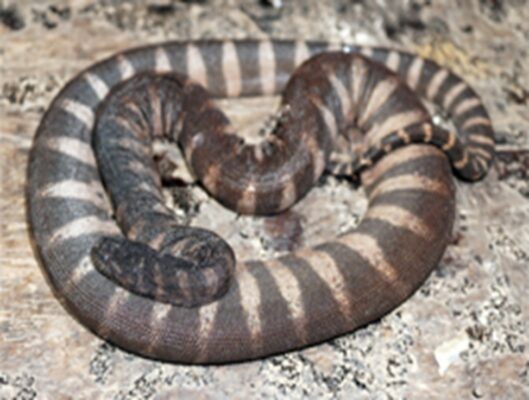 |
| Fig.14: Hydrophis cyanocinctus | Fig.15: Enhydrina schistosa |
3. CHARACTERISTIC CLINICAL SYNDROMES IN PATIENTS INFECTED WITH SNAKE VENOMS IN VIETNAM, LAO & CAMBODIA
3.1. In-spot – Fang marks: Venomous snake bites always leave fang marks on the spot (Except for Bungarus candidus and B.multicinctus snakes, which do not leave any fang marks). From the fang marks of the Elapidae family, purple-black necrotic tissue always appears and spreads quickly around. The fang marks of the Viperidae family always bleed uncontrollably… On the contrary, the teeth marks of healthy snakes are just scratches.
Note: Not all patients who are bitten by venomous snakes and have fang marks at the site of the bites are envenomed.
3.2. Clinical characteristics of envenomed patients with Elapidae family:
The neurotoxic syndrome is characteristic of the Elapidae family with the most prominent clinical manifestation being neuromuscular paralysis: The earliest symptoms are vomiting, heavy eyelids, blurred vision, drowsiness, numbness of the mouth – tongue – lips, headache, dizziness… Ptosis caused by external ophthalmoplegia that appears a few minutes after being bitten by Elapidae snake. This is the first symptom of muscle paralysis. Paralysis is soft, uniform, rapidly progressing throughout the body. Particularly life-threatening is respiratory muscle paralysis afterwards acute respiratory failure, leading to death if not treated properly and promptly
Note : There is never focal paralysis. Peripheral nerve-muscle paralysis while the central nervous system remains normal and the hemostatic coagulation system remains normal.
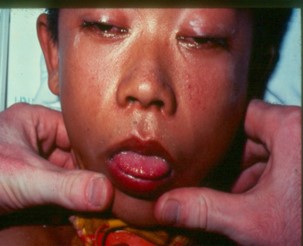
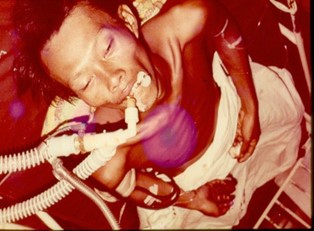

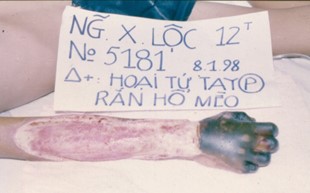
3.3. Clinical characteristics of envenomed patients with Viperidae family
At the site of the bite: Uncontrolled bleeding from a snake bitten wound is a common symptom in all Viperidae envenomed patients, accompanied by tissue necrosis, pink blisters, cloudiness due to hemorrhage…
Whole body symptoms: Coagulation and hemostasis disorders appear in all envenomed patients with Viperidae venom. Spontaneous, multi-modal bleeding (spots, hemorrhagic plaques…) in the skin, mucous membranes of the whole body (gastrointestinal, genitals tract,..), especially dangerous is cerebral hemorrhage and pregnant women.
Lab-Test: All coagulation and hemostasis factors are reduced: Fibrinogen only remains trace (Normal: 200-400 mg/dl). Platelets < 50 G/l (Normal: 150-300 G/l).
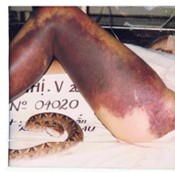
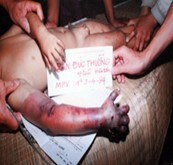
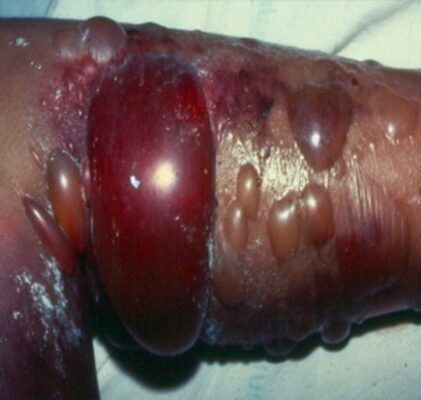
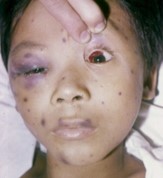
3.4. Pathogenesis of snake venom
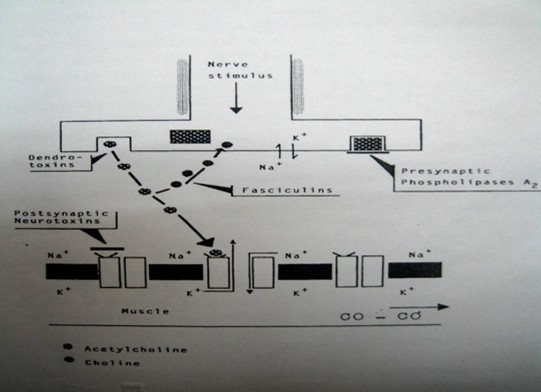
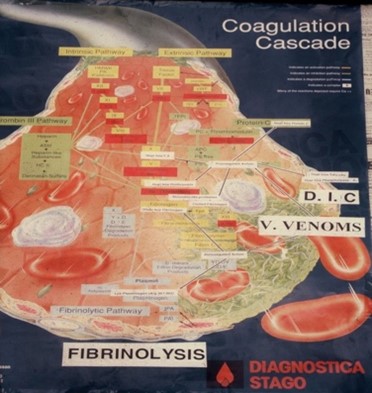
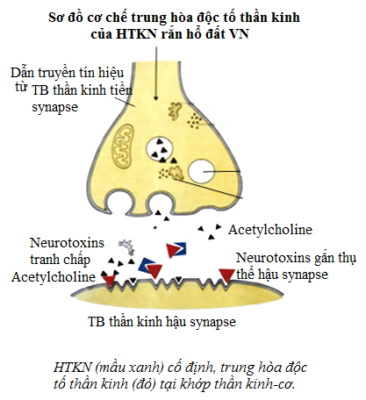
Note: Red: Venom. Black: Acetylcholine. Blue: Antivenom
4. RESULTS OF RESEARCH IN MANUFACTURING ANTIVENOMS AND CLINICAL TREATMENT APPLICATION
4.1. Role of Antivenom:
In 1971, WHO recommended: ” Antivenom is the most effective medicine to treat envenomed patients and popular worldwide.”
Vietnam is honored to be the first place to invent the Antivenom (AV) by Dr. A. Calmette right at the Sai gon – Pasteur Institute in 1891. Yet more than 100 years later, there still was not any type of (AV) in Vietnam. Since 1990, responding to urgent clinical requirements, Dr. Trinh Xuan Kiem and his colleagues from the venomous snake research Unit of Cho Ray Hospital have successfully created Naja kaouthia AV. At the same time, 16-year-old patient (Le Quang T) was bitten by Naja kaouthia and suffered acute respiratory failure and was on a ventilator until the 58th hour. He was saved his life by the Naja kaouthia AV that Dr. Kiem’s Unit had just successfully manufactured. This was the first snake bite patient to be saved by AV made by Vietnamese people right in Saigon City, VN.
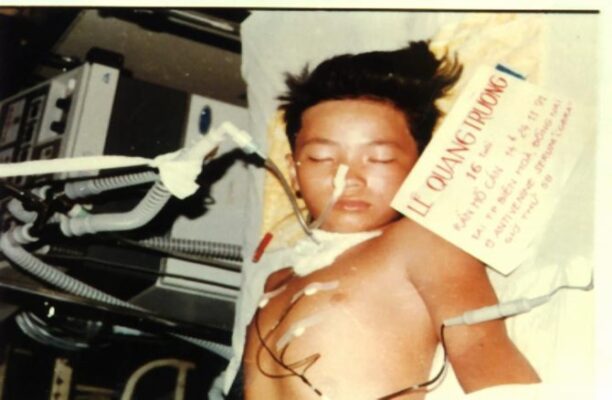 |
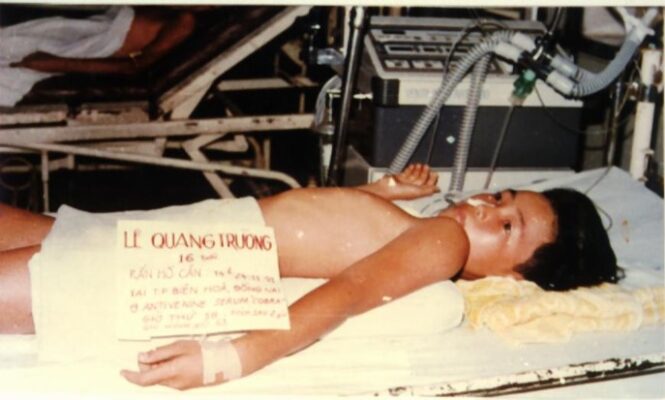 |
| Fig.27: The first snake bite victim: Le QT: had acute respiratory failure due to N.K venom, requiring mechanical ventilation for the 58th hour at Cho Ray Hospital, 1991. |
Fig.28: Le QT recovered after 6 hours of treatment with specific AV, it produced by Trinh X Kiem at Cho Ray, 1991. |
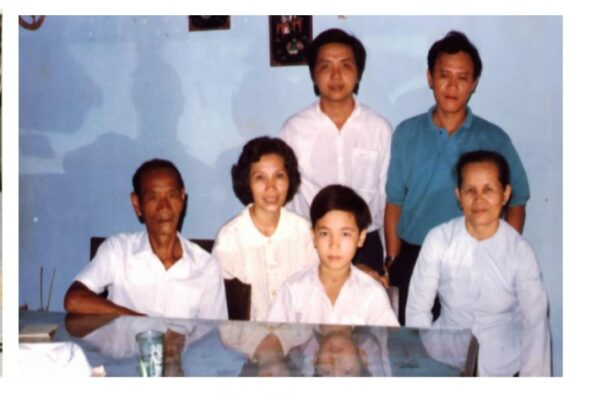
4.2. Image illustrating the treatment effectiveness of AVs in Vietnam
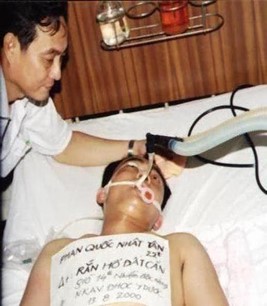 |
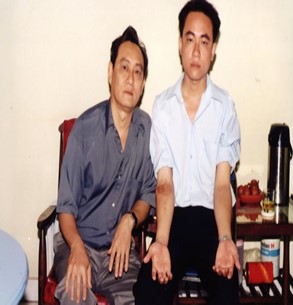 |
| Fig.29: PQN patient envenomed by N. kaouthia venom, recovered with specific AV treatment at Cho Ray Hospital, 1998. | |
 |
|
|
Fig.30: Patient NV.Ph envenomed by Caloselasma rhodostoma (C.R) venom admitted to Cho Ray Hospital, 1998. |
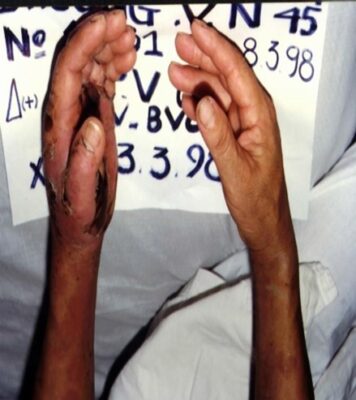 |
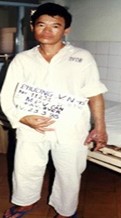 |
|
Fig.31: Patient NV.Ph completely recovered from C.R bite, after treatment with specific AV at Cho Ray Hospital, 1998. |
|
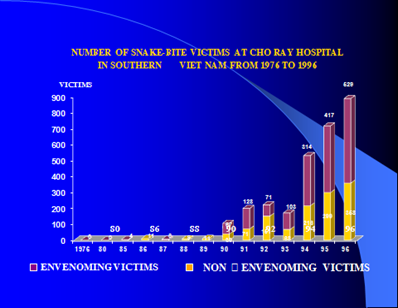
The highest award for the Vietnam Society of Toxicology & Vietnam Institute of Toxicology is the research and production antivenom program for clinical application, which has directly contributed to saving the lives of over three thousand snake bite patients in Vietnam.
The next goal is to focus all resources on manufacturing AVs, providing free of charge to save the lives of venomous snake victims in our country and then to support Laos and Cambodia.
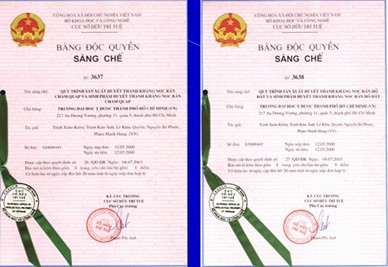
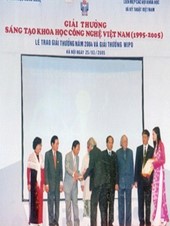 |
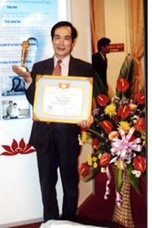 |
| Fig.34: The VN Government granted the Vietnam Science and Technology Innovation Award for AV manufacturing & clinical applications successfully. | |

Trinh Xuan Kiem. Associate Professor, PhD.BSCC.
Trinh Xuan Long. MSc MD.
|
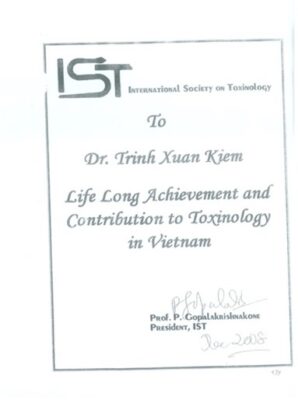 |
Fig.35: The International Society of Toxicology recognized that Dr. Trinh Xuan Kiem: Life Long Achievement and Contribution to Toxicology in Viet Nam.
4.3. Results of research and manufacturing of Antivenoms combined with training
- Naja.kaouthia AV patented, 2003.
- Calloselasma rhodostoma AV patented, 2003.
- Result of CR.AV Multi-center clinical trial research, combined with successful training of Master Chu Thi My, 2019.
 |
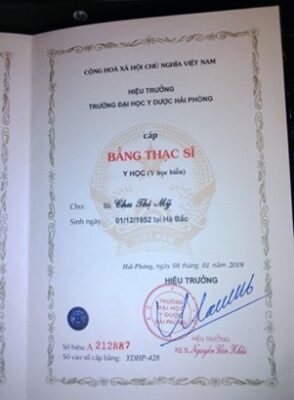 |
|
Fig.36: Master Chu Thi My with her thesis on multi-center clinical trial of C.rhodostoma AV, 2019. |
|
4. Research and manufacture N. siamensis AV, combined with successful training of PhD Le Khac Quyen. 2019.
 |
 |
|
Fig.37: Dr. Le Khac Quyen with his thesis on successful manufacturing N. siamensis AV, 2019. |
|
- Research and manufacture of North + South Bungarus candidus AV combined with successful training of Ph.D. Thai Danh Tuyen, 2014.
- Manufactured bivalent kaouthia & N.atra AV, combined with successful training of Master Vu Cong Thanh, 2010.
- Research and manufacture of King cobra AV, combined with successful training Master Truong Bich Thuy, 2010.
- Supporting the successful training of Ph.D. Le Van Dong at Singapore University (NUS). Title: Biochemical and Immunological studies on snake venoms of South Vietnam. 2005.
- Supporting the successful training of Ph.D Ha Tran Hung at Karolinska Institute, Stockholm, Sweden. Title: Clinical research on the effectiveness and safety of the N. multicinctus AV, 2010.
- Successfully trained level 2rd specialist Doctor Ngo Van Hong with the topic of researching eye damage caused by snake venoms, 2000.
- Results of Science-Technology Cooperation (Vietnam-USA): Research on manufacturing an anti-cancer biological product (Disintegrin) from snake venom in Viet Nam, 2018.

